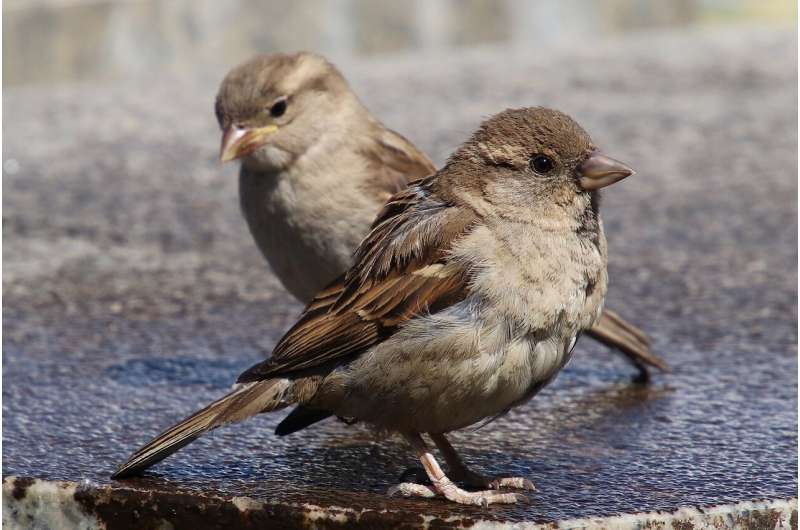Noise pollution reduces the reproductive success of the house sparrow

The study presents a new line of research, since so far there have been very few studies that have focused on loud and intermittent noises of a recreational nature, as is the case of traditional festivals, and the effects they cause on urban fauna.
The Cavanilles Institute of Biodiversity and Evolutionary Biology of the University of Valencia, in collaboration with the University of Alicante, has studied how noise pollution from the Moors and Christians festivities affects the reproduction of the house sparrow. The study presents a new line of research, since so far there have been very few studies that have focused on loud and intermittent noises of a recreational nature, as is the case of traditional festivals, and the effects they cause on urban fauna.
The authors of the article, Edgar Bernat and José Antonio Gil, from the Cavanilles Institute, and Germán López, a researcher at the University of Alicante, have found that the population of juvenile sparrows decreases in those towns that celebrate the Moors and Christians festival during the breeding season. This is due to the noise pollution caused by the firecrackers, musket shots and fireworks from the festivity.
"Recreational and intermittent noise has been studied very little in terms of the effects it has on urban fauna. In this case, we studied the house sparrow, since it is an urban bioindicator and we wanted to know to what extent the festivals that coincided with the breeding season had an influence on their reproduction, which is another aspect that had not been analyzed until now in any species," explains Edgar Bernat.
To achieve this, the study, published in the journal Environmental Pollution, analyzed five pairs of towns depending on whether they have the holidays between April and May and therefore coincide with the breeding season; or if they are held outside the spring. According to Bernat, "we not only wanted to make the comparison based on when the festivities are, but also that they were more or less similar municipalities and that they are relatively close." Thus, Banyeres de Mariola was compared to Bocairent, Onil to Castalla, Muro de Alcoi to Cocentaina, Petrer to Villena and Alcoi to Ibi.
To carry out the sampling, the researchers have counted the juvenile individuals—born in the year of study—that were in an area of one hundred meters around the Moors and Christians route fifteen and thirty days after the end of the festivities. Thus, they have been able to obtain the ratio of juvenile and adult individuals that has served as an indicator of youth productivity.
This analysis, which was carried out in 2019, showed that there were more juvenile sparrows in localities where the festivals are outside the breeding season. "When we were going to publish these results, the pandemic arrived, everything was canceled and we saw an opportunity to make a comparison in those municipalities where the breeding season did coincide with the Moors and Christians," says the expert.
Thus, the article points out that the youth ratios in 2020 were in both types of localities, with parties in spring, canceled, and with parties at another time. Likewise, the authors have seen that the confinement has not had a notable effect on the normal reproductive success of the species, although it did improve in the localities where the spring festivals were canceled.
Bernat believes that this is due to the fact that the sparrow's reproduction not only depends on acoustic factors, but also others such as the food that people provide and that disappeared in the confinement. Therefore, this study also leaves possible future lines of research regarding other elements that affect the reproduction of fauna. In addition, another of the possible avenues for further study is to know how air pollution created by the parties themselves, and not just noise pollution, affects sparrows.
As the researcher mentions, "we do not say that traditional festivals should be canceled or that they be transformed because it affects the reproduction of the sparrow. However, we believe that compensatory measures must be carried out to help them in another way, because one of the decisions that harms birds the most is the absence of green policies in cities. For example, placing natural grass instead of artificial grass, avoid paving parks and adapting house tiles so that they can nest. In other words, provide them with facilities despite the fact that you harm them during those festivities."
More information: Edgar Bernat-Ponce et al. Recreational noise pollution of traditional festivals reduces the juvenile productivity of an avian urban bioindicator, Environmental Pollution (2021). DOI: 10.1016/j.envpol.2021.117247
Journal information: Evolutionary Biology , Environmental Pollution
Provided by Asociacion RUVID





















